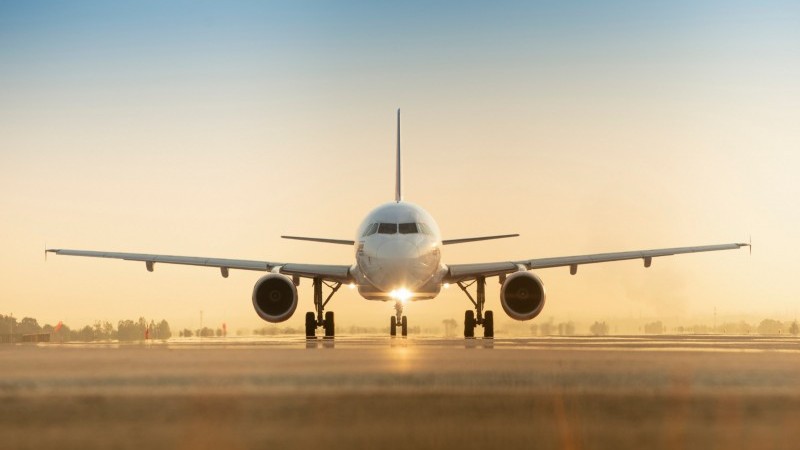How are major European carriers performing?
Lufthansa
In 2021, Lufthansa Group had total revenue of €16.8bn, up 24% YoY, including traffic revenues of €11.9bn, up 31% YoY, and adjusted EBITDA loss of €90mn (compared to the respective loss of €2.9bn in FY 20). In FY ’21, the adjusted EBIT loss was €2.3bn (a significant improvement on the loss of €5.5bn in the preceding year), and adjusted negative free cash flow of €0.9bn (vs. negative FCF of €3.7bn in FY 20). Lufthansa’s free cash flow benefited from the turnaround in the company’s cash from operating activities to a positive €0.6bn, compared to the negative amount of €2.3bn in the preceding year, while gross capex remained at a similar level of approximately €1.3bn. Adjusting Lufthansa’s free cash flow further by €0.8bn of the tax payments deferred from 2020, adjusted free cash flow would have been close to breakeven at negative €45mn in FY ’21.
In 2021, Lufthansa benefited from the structural decrease in its personnel costs of approximately 10% relative to the pre-Covid 19 levels. Also, during the year, Lufthansa Cargo had a record performance, almost doubling its adjusted EBIT year-on-year to €1.5bn (from €0.8bn in FY 20).
In 2021, passenger numbers reached 47mn, up 29% YoY, and the number of flights increased by 18% YoY, with available seat kilometres up 32% YoY. The offered capacity rose from 21% of the 2019 level at the beginning of last year, to approximately 60% at the end of it, to amount to approximately 40% on average for FY ’21.
Last year, Lufthansa had multiple fundraising activities, including issuing six bonds, 20 aircraft financings and an equity capital increase, leading to the repayment of the WSF (German Economic Stabilisation) funds in full. At the end of 2021, Lufthansa had access to liquidity to the tune of €9.4bn.
Lufthansa’s management expects a strong travel season in 2022, with the summer capacity on short and medium-haul routes close to the 2019 levels and bookings for the Easter period and summer partially above the pre-crisis levels. The company says that it is confident there will be a strong upswing in passenger traffic this year, reflecting the pent-up demand for leisure and business travel, which was already noticeable during the prior year, while risks include the fallout from the war in Ukraine and related geopolitical uncertainties.
For the summer season, Lufthansa expects to increase available capacity to around 85% of the 2019 levels, while on short- and medium-haul routes, the figure is expected to reach around 95%. For FY ’22, Lufthansa Group expects an average capacity of over 70% of the 2019 levels.
In 2022, Lufthansa anticipates further improvements in adjusted EBIT and adjusted free cash flow, despite the notable cost inflation, including traffic control and airport charges and fuel costs, partially mitigated by fuel hedges. The improvements are likely to manifest themselves more after 1Q of this year, which was still impacted by the Omicron variant of Covid-19.
IAG
In 2021, International Consolidated Airlines Group (IAG), had total revenue of €8.5bn, up 8% YoY, including passenger revenue of €5.8bn, up 6% YoY, and an operating loss before exceptional items of €3.0bn (compared to the loss of €4.3bn in FY 20). In FY 21, IAG had negative EBITDA before exceptional items of €1.0bn but managed to achieve a positive EBITDA of €0.25bn in 4Q of the year for the first time since the start of the pandemic.
The company had negative free cash flow of €0.3bn in FY21, but with a very low level of gross capex of €0.7bn, partially offset by the asset disposals of €0.5bn. IAG’s net cash from operating activities for the year was negative €0.1bn, helped by the substantial positive operating cash flow of €1.0bn in 2H 21. At YE ’21, IAG had liquidity of €12.0bn.
In 1Q ’22, the company expects capacity to be around 65% of the 2019 levels, with the quarter expected to be loss-making at the operating profit level due to the impact of the Omicron variant, operating costs of restoring capacity and due to the normal annual seasonality. IAG noted that bookings have been strengthening for the Easter and summer periods, with the capacity in 3Q ’22 expected to be at approximately 90% of the 2019 levels and planned full restoration of the North Atlantic routes for that quarter.
For FY ’22, the company expects to be close to 85% of the 2019 levels and for operating profits to be positive from 2Q onwards and significantly positive for the full year of 2022. IAG guides for net cash flows from operating activities to also be “significantly positive” for FY ’22.
Of note is a significant increase in the gross capex budget in FY22, to €3.9bn (compared to just €0.7bn in FY 21), driven by the need to restore the capacity to the pre-pandemic levels and due to the delay in the delivery of aircraft and deferred pre-delivery payments from 2021.


